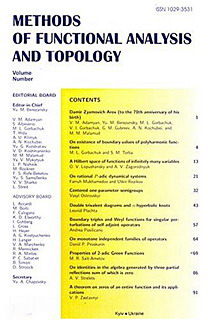D. Strelnikov
Search this author in Google Scholar
Boundary triples for integral systems on the half-line
MFAT 25 (2019), no. 1, 84-96
84-96
Let $P$, $Q$ and $W$ be real functions of locally bounded variation on $[0,\infty)$ and let $W$ be non-decreasing. In the case of absolutely continuous functions $P$, $Q$ and $W$ the following Sturm-Liouville type integral system: \begin{equation} \label{eq:abs:is} J\vec{f}(x)-J\vec{a} = \int_0^x \begin{pmatrix}\lambda dW-dQ & 0\\0 & dP\end{pmatrix} \vec{f}(t), \quad J = \begin{pmatrix}0 & -1\\1 & 0\end{pmatrix} \end{equation} (see [5]) is a special case of so-called canonical differential system (see [16, 20, 24]). In [27] a maximal $A_{\max}$ and a minimal $A_{\min}$ linear relations associated with system (1) have been studied on a compact interval. This paper is a continuation of [27] , it focuses on a study of $A_{\max}$ and $A_{\min}$ on the half-line. Boundary triples for $A_{\max}$ on $[0,\infty)$ are constructed and the corresponding Weyl functions are calculated in both limit point and limit circle cases at $\infty$.

